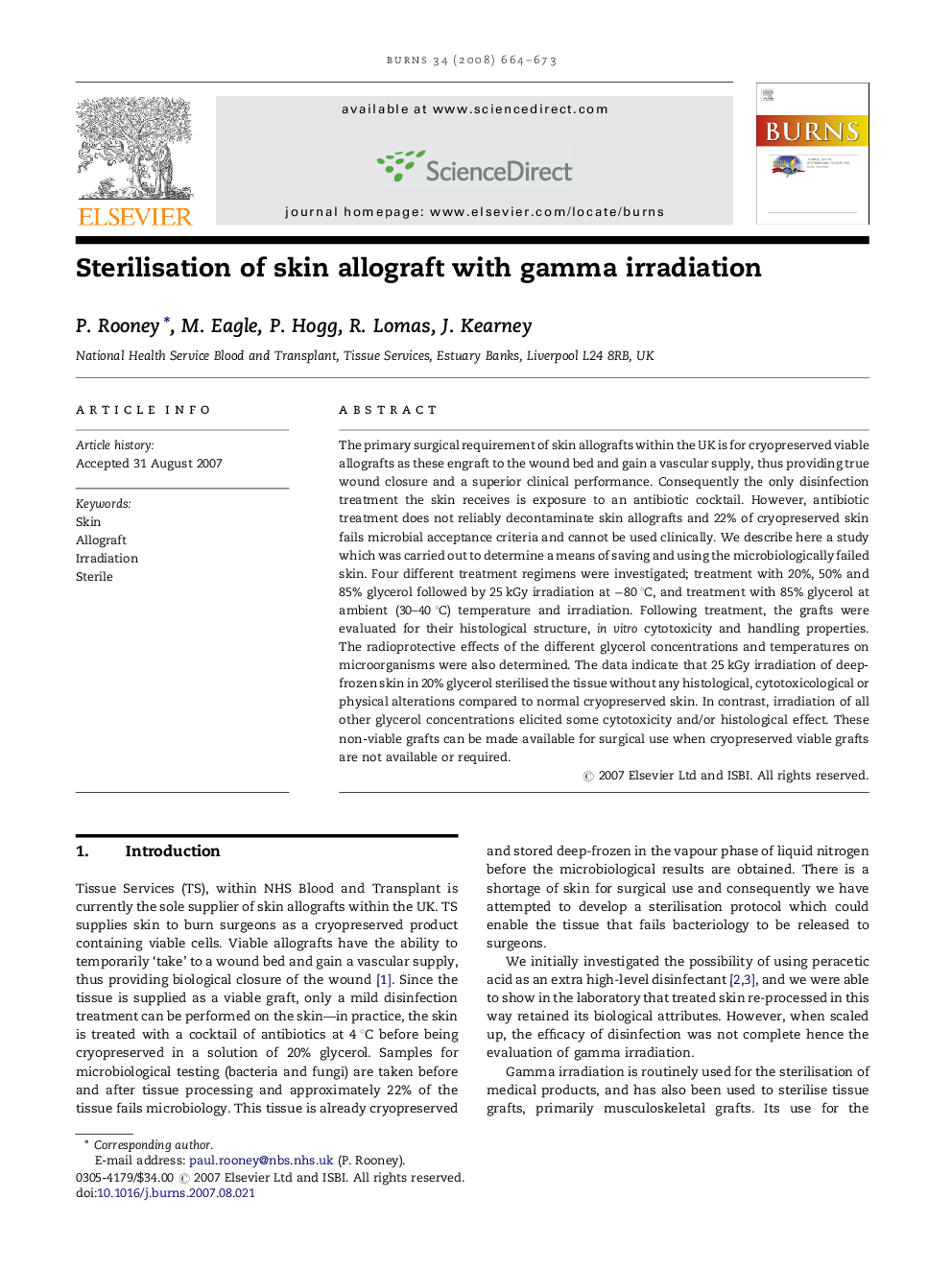| Article ID | Journal | Published Year | Pages | File Type |
|---|---|---|---|---|
| 3106090 | Burns | 2008 | 10 Pages |
The primary surgical requirement of skin allografts within the UK is for cryopreserved viable allografts as these engraft to the wound bed and gain a vascular supply, thus providing true wound closure and a superior clinical performance. Consequently the only disinfection treatment the skin receives is exposure to an antibiotic cocktail. However, antibiotic treatment does not reliably decontaminate skin allografts and 22% of cryopreserved skin fails microbial acceptance criteria and cannot be used clinically. We describe here a study which was carried out to determine a means of saving and using the microbiologically failed skin. Four different treatment regimens were investigated; treatment with 20%, 50% and 85% glycerol followed by 25 kGy irradiation at −80 °C, and treatment with 85% glycerol at ambient (30–40 °C) temperature and irradiation. Following treatment, the grafts were evaluated for their histological structure, in vitro cytotoxicity and handling properties. The radioprotective effects of the different glycerol concentrations and temperatures on microorganisms were also determined. The data indicate that 25 kGy irradiation of deep-frozen skin in 20% glycerol sterilised the tissue without any histological, cytotoxicological or physical alterations compared to normal cryopreserved skin. In contrast, irradiation of all other glycerol concentrations elicited some cytotoxicity and/or histological effect. These non-viable grafts can be made available for surgical use when cryopreserved viable grafts are not available or required.
